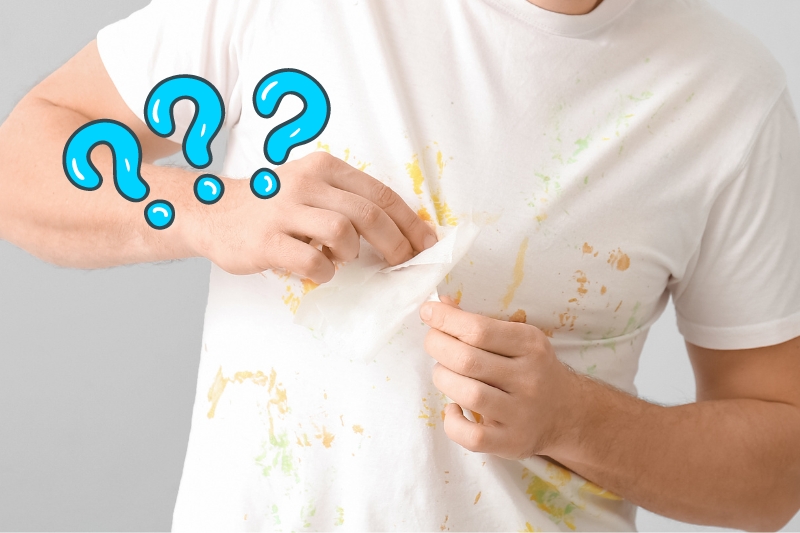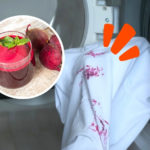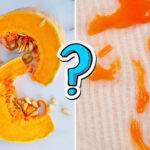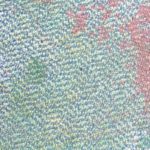Everyone spills stuff now and then. Dropping your dinner or knocking over a drink are normal parts of life. Unfortunately, that means that stains are as well!
Whether you’re trying to clean a stain from your clothing, furniture or carpet, some things just refuse to come out.
So, what are the hardest stains to remove? And are there any techniques that can be used to get rid of them once and for all? This article gives you all the information you need to know.
What Is the Hardest Stain to Clean?
No matter what stain you’re trying to eliminate, there are two rules that you should always follow:
- Treat the stain as soon as possible.
- Do a patch test of your stain remover on a discrete patch of the fabric first. Even when you try to remove a stain straight away, though, some will not budge!
Below you will find our list of the nine hardest stains to remove and a tried and tested method for eliminating them once and for all! Some stain removal techniques can only be used on white or coloured fabric, but each method in our list is safe for any material.
1. Blood
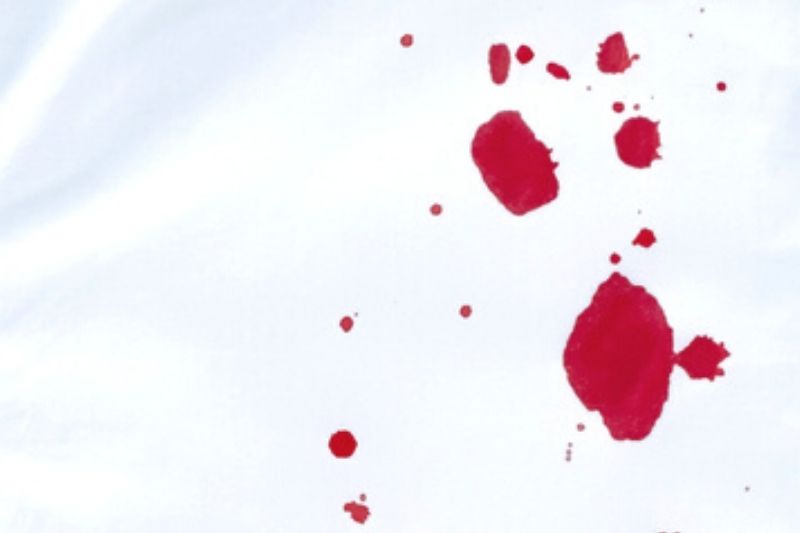
From a nosebleed to a deep cut, many things in life can leave blood stains on your clothes, upholstery or furniture.
Unfortunately, blood contains high levels of protein, meaning it is very tricky to remove from the majority of fabrics.
On top of this, blood is an oxidising stain. This means the blood will become harder to remove once the stain is exposed to the oxygen in the air.
Removing dried blood from your clothing can be extremely difficult, but if you manage to catch the stain while the blood is still fresh, you can use the following steps to eliminate it:
- Run under cold water: Run the stained material under cold water until most of the blood is gone. You want to avoid using hot water at this point, as the heat will cause the proteins in the blood to clog, allowing them to penetrate the inner layers of the fabric.
- Use an enzyme-based cleaner: Rub enzyme-based laundry detergent or bicarbonate of soda into the stain. Rinse the cleaner out of the fabric using cold water, lightly rubbing at the stain while you do so.
- Wash & dry: Wash the stained item in the washing machine or handwash the affected area using cold water. Once clean, leave the item to air dry.
2. Poo
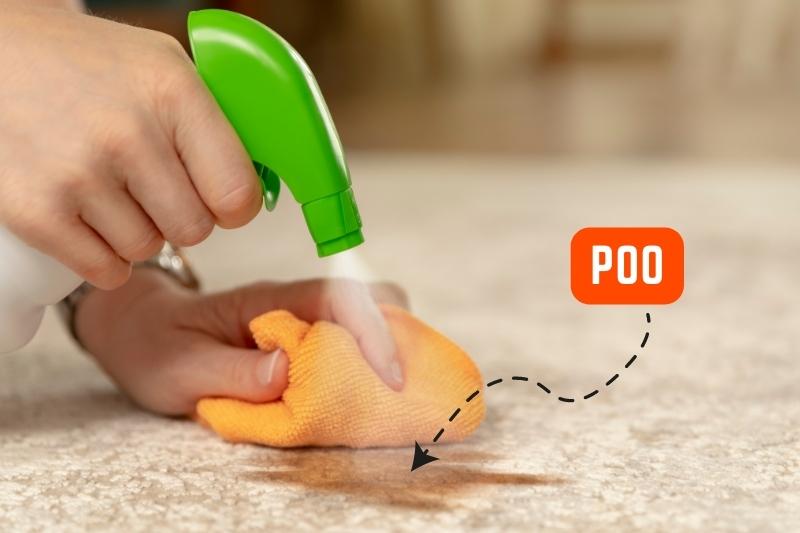
Poo stains are some of the worst possible stains out there. Not only are they unsightly, but they are also unhygienic and tend to leave behind an unpleasant odour.
When you live with pets or young children, this is one stain you need to know how to clean up.
The longer a poo stain is left to sit, the worse the lingering smell will become and the harder it will be to remove—as usual, try to deal with the stain as quickly as possible.
To do this, follow the below instructions:
- Remove poo: Scoop as much poo as possible from the surface you are cleaning. Avoid rubbing at the stain while doing this, as it will cause the poo particles to move further into the fabric.
- Apply cleaner: Cover the stain with either a pet stain remover (for animal poo) or a liquid enzyme-based cleaner (for human poo). Leave the stain remover on the affected area according to the label instructions
- Repeat as required: Repeat steps 2 and 3 as needed until all traces of the stain are gone. Once you’re happy, we recommend washing machine-washable items on a hot cycle to kill germs (if this won’t damage the material).
3. Tomato sauce

Next, we have a staple food in many kitchens: tomato sauce. This is a fantastic addition to any meal, but it is notoriously easy to get down your front (especially when eating it with spaghetti!).
The grease in meat sauces such as Bolognese makes this stain even harder to remove. It is also another oxidising stain, meaning you need to work quickly!
For the best results, you will need to do the following:
- Soak in water & vinegar: Soak the stain in cold water as soon as possible. Add a tablespoon of white vinegar to the water and allow the fabric to continue soaking for several minutes.
- Wash with enzyme-based detergent: Wash the stained item in a hot wash with an enzyme-based detergent. In this case, one with pectinases is preferable as this is the type of enzyme that is good at removing plant-based stains.
- Leave to air dry: Once you’ve finished washing, leave the fabric to air dry. The tomato stain should have been completely eliminated.
4. Chocolate

Chocolate may taste delicious, but it is another food that can be tricky to get out of your clothes or other fabrics.
The dark colour of the cocoa powder makes these stains particularly stand out. If you’re a hot chocolate lover, you also need to watch out, as the proteins, fats, and sugar in the drink make these stains even more challenging to remove.
There are many ways to remove chocolate stains, but the following method will work for both regular chocolate marks and those left from hot chocolate spillages.
- Scrape off chocolate: Remove as much chocolate as possible by scraping at the chocolate or running it under a cold tap (in the case of hot chocolate).
- Add stain remover: Add stain remover or washing-up liquid to the stain and gently rub it into the chocolate marks. Ensure you apply gentle pressure to avoid pushing the stain deeper into the fabric.
- Wash & dry: Put the item on a warm wash in your washing machine (if possible) or wash it by hand. Leave to air dry.
5. Red wine
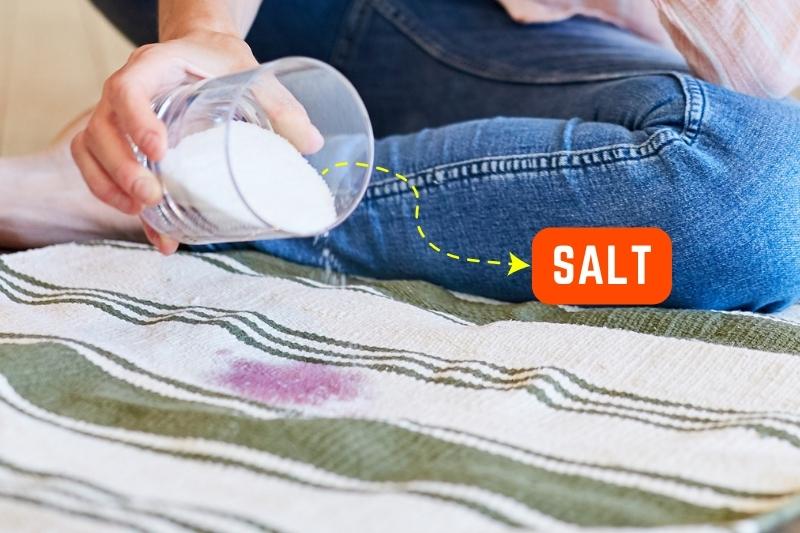
Red wine is a favourite drink among many, but it can be very troublesome when removing its stains from clothing and carpet. Once again, this is an oxidising stain. However, it also contains acid, which makes the fibres of the fabric more open to the red dye from the grapes.
One way to remove this stain is by using the following method:
- Apply salt: Pour a generous amount of salt onto the stain so that it can absorb the wine from the material. Once the salt has turned pink, it has absorbed as much as possible. Brush it off the fabric using your hands.
- Soak overnight: Soak the stained area in a mixture of cold water and enzyme-based detergent overnight. This helps to break down the organic matter in the wine stains so they can be removed when washed.
- Wash & dry: Wash the fabric with cold water and leave it to air dry. Repeat the above steps if necessary, never washing with hot water until the stain is eliminated. Hot temperatures only make the stain harder to remove.
6. Craft supplies

Arts and crafts can be fun, but messes are usually a given! Unfortunately, some craft supplies make very stubborn stains.
Ink, oil or acrylic paint, and crayon are three of the worst culprits. With crayons, you can simply soak the stain in white vinegar for 30 minutes and then wash the fabric as usual.
However, to remove ink and paint stains, you need to use the following method:
- Apply rubbing alcohol: Apply a small amount of rubbing alcohol to the stain, then rub at the stain using a bristled brush until the paint or ink has been removed. The stain should lift relatively easily.
- Wash & dry: If dealing with garments, wash the item as usual and leave it to air dry. If you have spilt craft materials on carpets or other soft furnishings, handwash them with hot water and leave them to dry.
If you need a quick fix and don’t have rubbing alcohol available, you can also soak the stain in a mixture of fresh milk and vinegar. This isn’t guaranteed to work, as all inks and paints have slightly different ingredients, but it will remove most of these stains.
7. Sweat
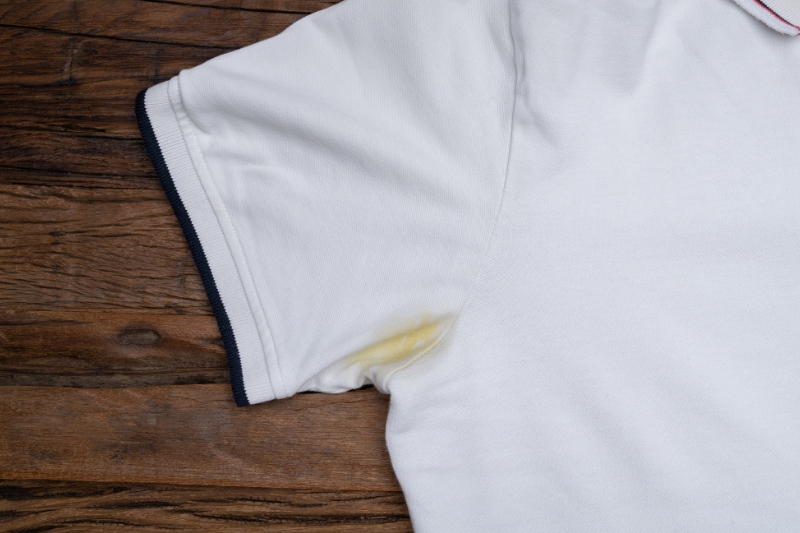
In general, body sweat does not leave stains on your clothing. However, armpit sweat contains other molecules (such as proteins, lipids, and steroids) that cause the underarms of your shirt to become yellow. This yellowing discolouration is particularly noticeable on white t-shirts and bras.
Washing your sweaty clothes as soon as possible is the best way to prevent these stains, but if your top has already become yellow, you can use the below method to remove the stain:
- Soak clothing: Soak the top or bra in a mixture of liquid enzyme-based detergent and an oxygen booster like BISSELL Oxygen Boost. The garments should be submerged for at least 30 minutes before continuing to the next step.
- Wash & dry: Put the garment in the washing machine on a warm wash (check the care instructions to ensure they’re suitable for machine washing – if not, wash by hand). Leave the top to air dry.
8. Coffee
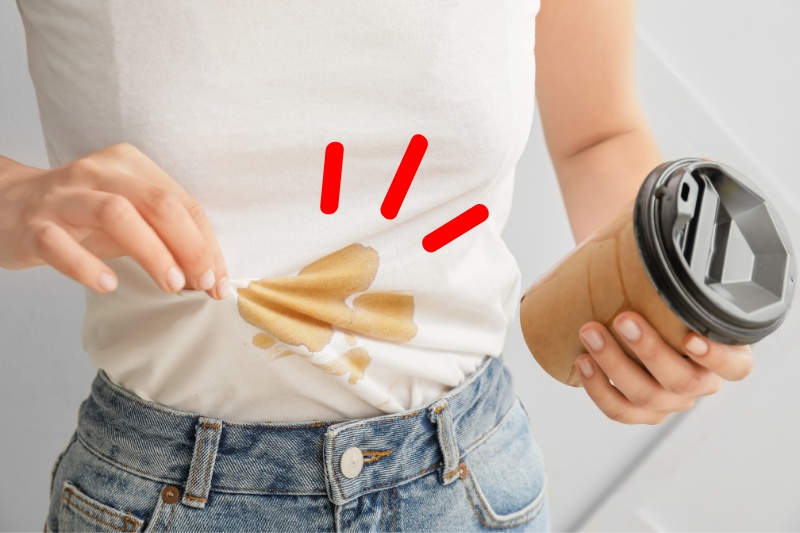
Many people rely on coffee to get them through the day. Unfortunately, it can be easy to spill a mug down yourself during the morning rush. This not only ruins your morning, but it can also ruin your shirt or carpet!
Thankfully, these coffee stains can be removed with the following steps:
- Apply your cleaner: Cover the coffee stain with laundry detergent, washing up liquid, or bicarbonate of soda. Gently rub the cleaner into the stain using your fingertips in circular motions.
- Rinse & wash: Rinse the stain remover from the item using cold water. You can then put the item on a cold washing machine cycle or wash it by hand using an enzyme-based detergent.
- Leave to dry: Let the fabric air dry
9. Makeup
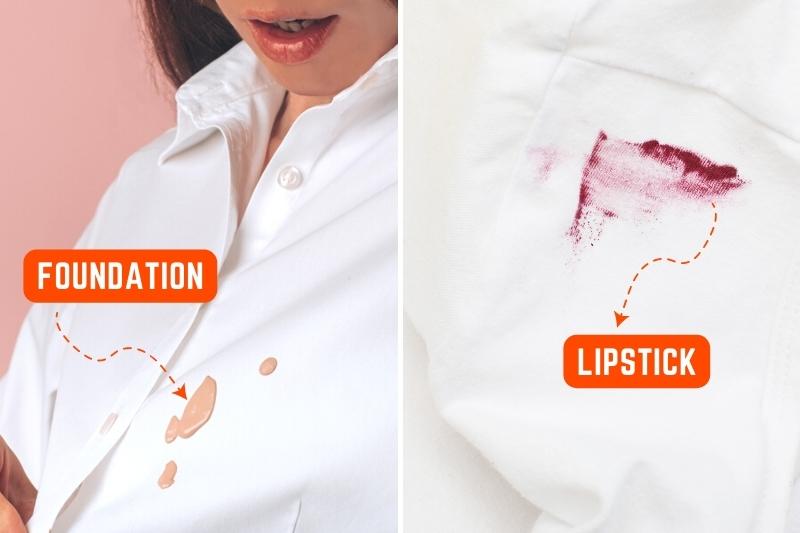
The final stubborn stain on this list is that caused by makeup. Foundation, lipstick, and eyeshadow all contain substances (such as oil, wax, and coloured pigments) that can dye and ruin your clothes or furniture when not cleaned properly.
A good cleaning method for all kinds of makeup is as follows:
- Remove excess makeup: Scrape as much makeup as possible from the fabric as quickly as possible. You can then saturate the stain in rubbing alcohol to dissolve any oil-based pigments that have gotten into the fibres.
- Rinse & pre-treat: Rinse the stain in cold water to remove the alcohol. Pre-treat any remaining marks with laundry detergent and an oxygen booster.
- Wash & dry: Wash the stained item in warm water, using more of the detergent and oxygen booster. Once the wash cycle has finished, leave the garment to air dry.

Hannah has a passion for cleaning. She worked her way around Australia by cleaning hostels in exchange for free accommodation and used her cleaning skills to bag a job as a chalet host for a luxury ski company in France.
